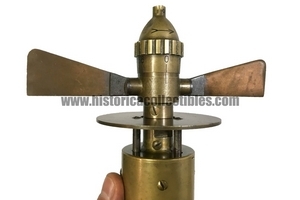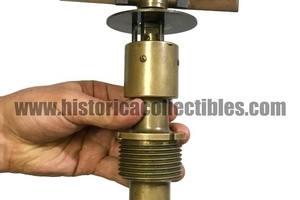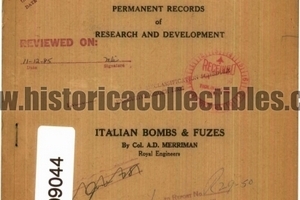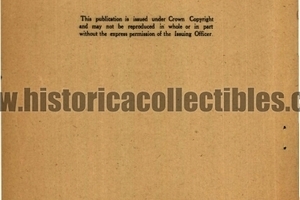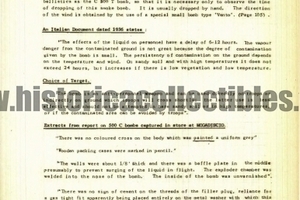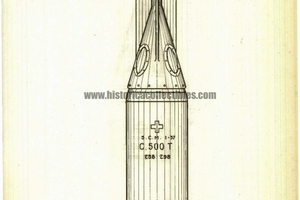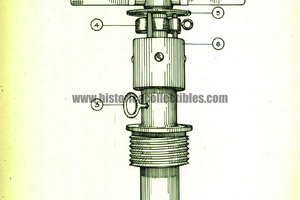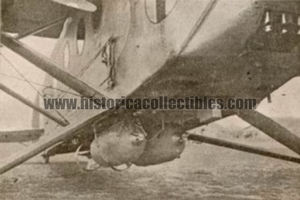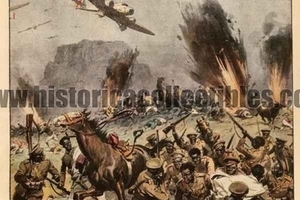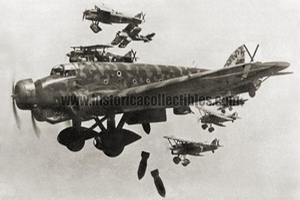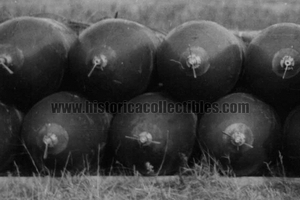Impact Detonator, Contact Fuze, for Type C500 T Mustard Gas Bomb, Italian Royal Air Force, 1935
Primer fuze or "contact fuze" (Aufschlagzünder) of the Type C-500 T mustard gas bomb, which was used between December 1935 and May 1936 by the Regia Aeronautica during the bombings in the Ethiopian War .
The fuze, completely made of bronze, is in excellent condition, is complete with all its parts and can be dismantled to check its functioning devices as it is deactivated.
In fact, from December 1935 to May 1936, during the Ethiopian war, the Italian forces used mustard gas against the Ethiopians mainly through C-500 T type bombs, weighing 280 kilograms, the Regia Aeronautica was the armed force that used almost all of the aggressive chemicals, dropping around a thousand bombs, each containing around 220 kilograms of mustard gas, against troop concentrations, retreating units and along communication routes, while on the Somalia front 95 and 186 bombs were dropped smaller, from 21 kg.
The C-500 T bomb was created with the aim of allowing high-altitude shooting with aggressive liquid, against large targets.
It was equipped with the "T" fuze which was designed in such a way as to cause the explosion of the bomb before it reached the ground. The explosion generated a rain of aggressive liquid which settled on the ground in the form of drops of various sizes (larger in the center of the affected area, smaller at the edges). The area sprayed by each single bomb and the concentration of the aggressive agent on the area itself depended on the intensity of the wind from the ground and the explosion height of the bomb.
The action of the aggressive liquid worked mainly through contact of the droplets on the skin of the affected individuals. Contact also took place through clothing of any kind (wool, canvas, leather, etc.) and the effect was not immediate. The first symptoms appeared from 6 to 12 hours after the individual had been hit, within the following 12-24 hours the first lesions appeared which became very serious if the affected surface was large, but still healed very slowly even if the affected surface it was small. The persistence of the aggressive agent on the ground varied depending on the nature of the latter and depending on the air temperature.
The effects could last for several days, for this reason the mustard gas was used far from the Italian units, so that the soldiers were not affected by it. For this reason, in fact, no Italian military unit (with the obvious exclusion of aviators) has ever witnessed an attack conducted against the enemy using aggressive chemicals.
Regarding the effectiveness, the reports are conflicting and detailed studies are lacking: in general, although the Ethiopians attributed the defeat of their armies mainly to the use of aggressive chemicals, the role of mustard gas and the other chemical weapons used (arsine and phosgene) was important in some actions but in itself not decisive in the overall conflict, where Italian technological superiority had greater weight.
From the fragmentary surviving documentation, it appears that Graziani was (on 12 October 1935) the first to request authorization to use all means (including aggressive chemicals) against the enemy.
This authorization was granted to him by Mussolini on 27 October. At the end of the year, when Badoglio took over command of the northern front from De Bono (17 November), the new general found himself in difficulty in stopping the violent Ethiopian counteroffensive. Therefore, even before obtaining formal permission from the Duce (28 December), Badoglio ordered the use of gas (20 December). The chemical attacks continued for about three months (the last documented one dates back to 31 March 1936).
[Testimony of Ras Immirù, in Angelo Del Boca, The war of Abyssinia 1935-1941, Feltrinelli, 1965, P. 74] «It was a terrifying sight. I myself narrowly escaped death. It was the morning of December 23rd, and I had just crossed the Tacozzè, when some airplanes appeared in the sky. The fact, however, did not alarm us too much, because by now we were used to the bombings.
That morning, however, they didn't throw bombs, but strange barrels that broke as soon as they touched the ground or the river water, and projected a colorless liquid around.
Before I realized what was happening, several hundred of my men were hit by the mysterious liquid and were screaming in pain, while their bare feet, their hands, their faces were covered in blisters. Others, who had quenched their thirst from the river, writhed on the ground in agony that lasted hours. Among those affected there were also farmers, who had brought their herds to the river, and people from the nearby villages."
"Description of the Fuze Used in the C-500 T Bomb": The digits 0 to 6 on the fuze head indicate in thousands of meters the bomb's fall before the fuze operates. the setting on the fuze is made before the bomb is loaded into the aircraft by manipulating the knob (2). Rotating this knob changes the height of the paddles and therefore their rotation speed. In this way the fuze can become armed after falling a known distance below the aircraft.
There are two safety devices: the safety pin at (3) and the safety clip at (4). The first is removed before loading the bomb into the aircraft and the second while the bomb is being dropped. At the end of the predetermined drop of the bomb, the fire becomes armed and then the pressure plate (5) is free to move under the action of air pressure and drive the fire.

